What Is Clay Product | Types of Clay Product
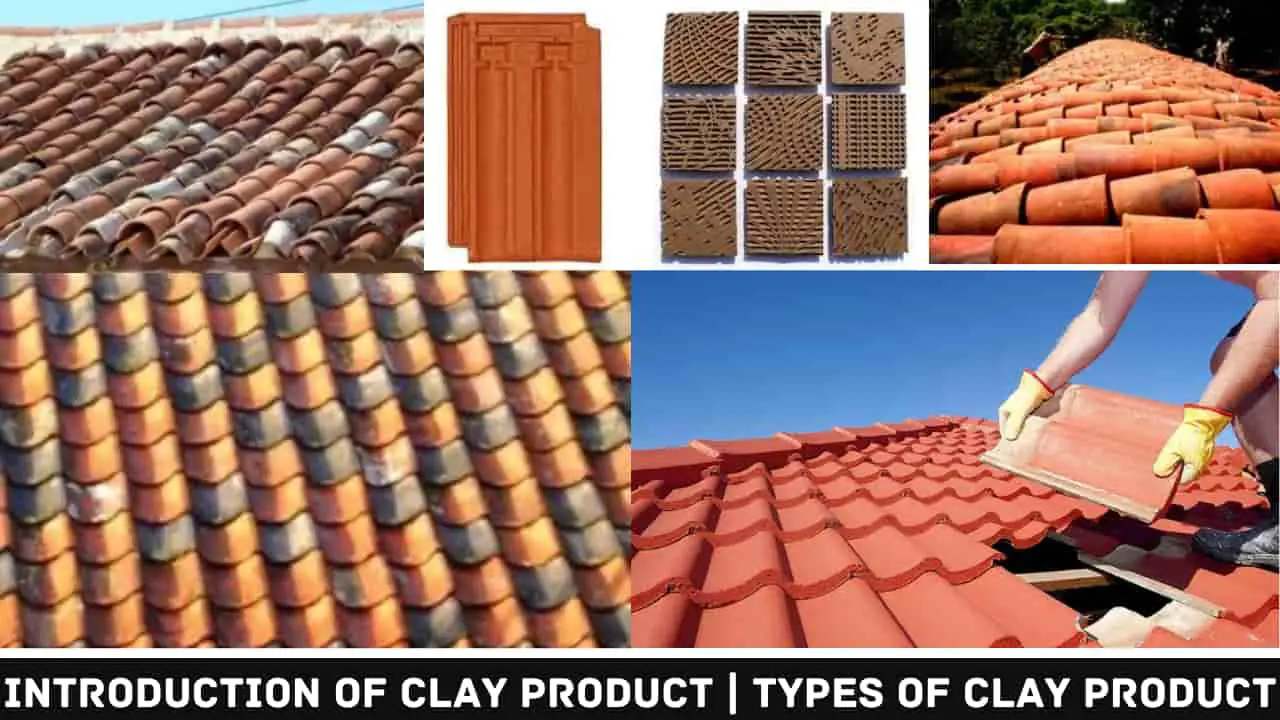
Table of Contents
What Is Clay Product?
There is a wide variety of structural clay products, broadly classified as facing materials, load-bearing materials, paving materials, roofing tile, and chemically resistant materials.
Examples of facing materials are face brick, terra-cotta, brick veneer, sculptured brick, glazed brick and tile, and decorative brick. Here, we are going to discuss certain aspects of clay and clay products used in the civil engineering field.
If you are given a list of various engineering materials, are you able to find out (identify) the clay products from them?, Can you state the standard requirements of a quality brick with reference to relevant IS?
Let’s discuss the above matter within the scope of this lesson.
Types of Clay Product
In routine construction work, we come across many clay products used in Masonry work, roof coverings, sanitary & drainage works, etc.
Let us enlist and briefly discuss these clay products used in building construction.
- Bricks
- Tiles
- Roofing Tiles
- Flooring Tiles
- Earthen Ware.
- Sanitary Wares.
- Stone Wares.
- Refractories.
- Porcelain etc.
Now, let’us discuss them.
1. Bricks
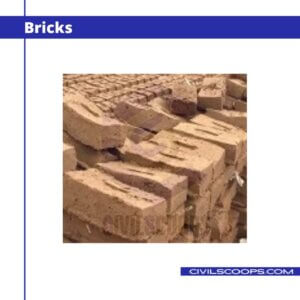
It is an artificial material of construction in the form of clay blocks of uniform size and shape. Clay is mixed with a desirable quantity of water and other ingredients, molded-in required form, dried & then burnt in, a kiln.
The clay used for manufacturing bricks should constitute of following ingredients
- Alumina or Clay 20 to 30% by weight.
- Silica or Sand 35 to 50% by weight.
- Silt 20 to 35% by weight.
- Lime, oxide of iron 1 to 2% by weight Magnesia Oxide.
- Manganese.
- Sodium, etc.
Compared to Stones.
Brick is lighter in weight, easily available uniform shapes and size, and cheaper in cost of manufacturing. Bricks are classified according to their engineering properties as under
- 1st Class Brick
- 2nd Class Brick
- 3rd Class Brick
- Over Burnt Bricks
- More Detail for Click here
2. Tiles
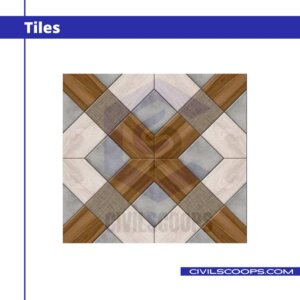
Being a clay product, they are used to serve as covering for pitched roof, The various roof tiles available in the market are.
- Allahabad Tiles.
- Flemish Tiles.
- Mangalore Tiles.
- Corrugated or Flat Tiles.
- Guna Tiles.
- Pot/Pan Tiles.
They are manufactured in various shapes and sizes. Normal the tiles are available in dimensions ranging as under.
[su_table responsive=”yes”]
| Length | Width | Thickness |
| 25 to 15 cm | 20 to 10 cm | 2.5 to 5.0 cm |
[/su_table]
3. Flooring Tiles
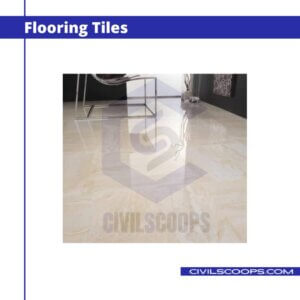
Tiles used to construct the payment are called flooring tiles. They are available in a rectangular or square shape, but depending upon its application, various sizes and geometrical shapes (in any desirable colors) are adopted.
These are flat tiles available in varying thicknesses from 1.5 cm. to 2.5 cm. They are available in the following sizes:
- 15 cm x 15 cm x 1.80 to 2.50 cm.
- 20 cm x 20 cm x 1.80 to 2.50 cm.
- 25 cm x 25 cm x 1.80 to 2.50 cm.
- 30 cm x 30 cm x 1.80 to 2.50 cm.
4. Earthen Ware
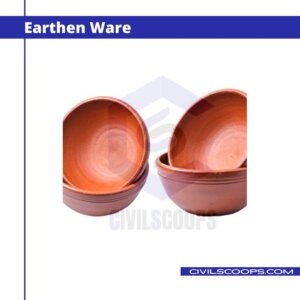
Earthenware articles are prepared from clay, which is burnt at low temperatures and cooled slowly.
It is soft and porous, but after Glazing, it is it becomes impervious to water. It is manufacture by adding required quantity of sand, crushed pottery, etc. to clay,
5. Sanitary Wares
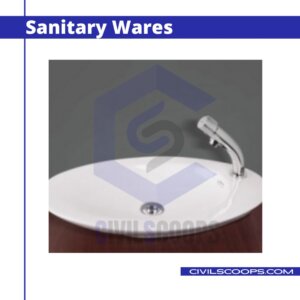
Water closest, lavatory & wash-basins. Urinals, sewer & Pipes, Glazed Tiles, etc. are used for sanitation purposes.
These items are known as Sanitary Wares. They are manufactured by burning Refractory clay, kaolin, Quartz, Felspar, stone, and crushed pottery at high temperature and cooled slowly.
6. Stone Wares
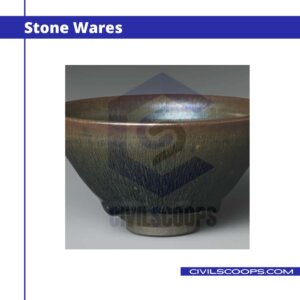
Stoneware articles are more compact and dense than Earthenware. On applying Glazing to Stoneware articles, they become impervious to water and are not affected by acids, etc. They are strong, durable, and resistant to corrosive fluids.
7. Refractories
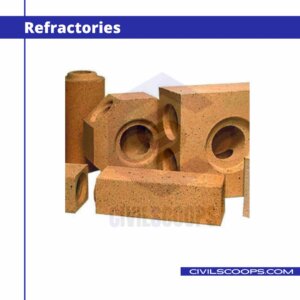
Refractories indicates those substances which are able to resist high temperature. It normally possesses the following properties. It should have good resistance to rapid changes in temperature, having a high melting point.
Its dimensional stability should not change due to high and rapid changes in temperature. It should be strong enough to resist compressive, crushing, and tensile forces in hot or cold conditions.
Its thermal conductivity should be suitable for the purpose it is used for. They are used in the manufacture of fire and refractory bricks, crucibles, lining materials for furnaces hollow tiles, silica bricks, magnesia bricks, etc.
8. Porcelain
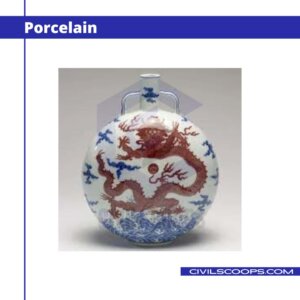
Sanitary ware, electric insulators, storage, vessels, reactor, chamber, crucibles, etc. Are but some of the porcelain articles available in the market. Porcelain indicates a fine earthenware, which is white in colour, thin & semi-transparent. It is manufacture by using clay of high purity, possessing a high degree of tensility and plasticity, felspar, quartz & minerals.
Porcelain is hard, brittle, and nonporous. These constituents are finely ground, thoroughly mixed in a liquid state, and then burnt at high temperature. They are low & high voltage porcelain.
Low voltage porcelain is prepared by a dry process. It comprises of white clay added to the fixed percentage of melted glass. Crokeries, Switch Block, Insulating Tubes, Lamp Sockets, etc. are examples of Low Voltage Porcelain.
The first firing is done up to 1200° C, after which the particles are coated with appropriate glazing material. The kiln temperature is then raised to 1500° C. By adding alumina or silicate of magnesia, China clay, or Kaolin along with quartz and felspar as filter and flux respectively, High voltage porcelain can be manufactured by a wet process.
These constituents increase the hardness and non-absorption properties to the product. It can resist high temperature to a certain extent. It is used for making articles like an electronic furnace as an electrical insulator for high-intensity electric current- in the manufacture of spark plugs, etc.
[su_box title=”FAQ” style=”default” box_color=”#333333″ title_color=”#FFFFFF” radius=”3″ class=”” id=””]
Vitrified Clay Pipe
Vitrified clay pipe is pipe made from a blend of clay and shale that has been subjected to high temperature to achieve vitrification, which results in a hard, inert ceramic.
Gypsum Clay Breaker
HOW TO BREAK DOWN CLAY SOIL IN A PLANTING HOLE
- Add powdered gypsum at the rate of two to three handfuls per square metre, then dig the soil over and water it in.
- However, for a quicker option, for example, in planting holes, use a liquid clay breaker with organic matter*
Leca Soil
LECA is an acronym that stands for lightweight expanded clay aggregate. It is made up of little balls of clay—a growing medium—and used in place of soil. It is commonly used in hydroponic gardening.
Clay Soil Improver
Adding materials such as organic compost, pine bark, composted leaves and gypsum to heavy clay can improve its structure and help eliminate drainage and compaction problems. Avoid adding sand or peat moss to clay; they can make those problems worse.
Liquid Clay Breaker
GroundBreaker is a liquid soil treatment and clay breaker that changes heavy clay and compacted soils into useable soil without the need to dig. It improves water penetration and aeration by changing the soil structure. GroundBreaker starts working immediately and maximum results will take 6 – 8 weeks.
Clay Products in Building Construction
Also a primary ingredient in many natural building techniques, clay is used to create adobe, cob, cordwood, and rammed earth structures and building elements such as wattle and daub, clay plaster, clay render case, clay floors and clay paints and ceramic building material.
Application of Clay Products
The high strength and durability of clay products underlie their wide use in the various elements of buildings, such as walls, wall and floor facing materials, lining materials for chemical industry apparatus, chimney, light porous aggregates for roofing, and sewer pipes.
Structural Clay Products
Typical structural clay products are building brick, paving brick, terra-cotta facing tile, roofing tile, and drainage pipe.
Structural Clay Products Applications
The material is commonly used in floor arches, fireproofing, partition walls, and furring. It continues to be used in Europe to build fire-resistant walls and partitions. In North America the material has largely been replaced by concrete masonry units.
[/su_box]
[su_note note_color=”#F2F2F2 ” text_color=”#333333″ radius=”3″ class=”” id=””]
Like this post? Share it with your friends!
Suggested Read –
- Different Types of Pavers for Driveways
- All About Flooring | What Is Flooring | 11Types of Flooring.
- What Is Fine Aggregate | Types of Fine Aggregates (Classification)
- All About Polymer Concrete | Why Is Polymer Concrete | Types of Polymer Concrete
- All About Soil Compaction | What Is Soil Compaction | Different Types of Soil Compaction Equipment
[/su_note]
Originally posted 2022-07-09 11:29:23.
